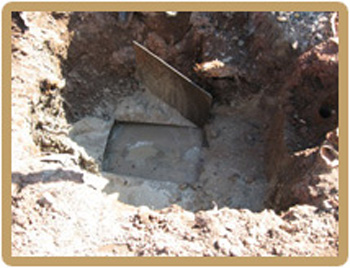Foam Tank Filling
Curren Environmental, Inc. (Curren) recommends that in all cases where it is feasible, the underground  storage tank be removed. While this approach is recommended, we know from experience that removal is not always feasible. Tanks can be located in basements or crawl spaces where removal is prohibitive. In these cases a tank closure in place is the preferred option. Petroleum storage tanks once cleaned can be filled with an inert material, such as sand, concrete slurry or foam.
storage tank be removed. While this approach is recommended, we know from experience that removal is not always feasible. Tanks can be located in basements or crawl spaces where removal is prohibitive. In these cases a tank closure in place is the preferred option. Petroleum storage tanks once cleaned can be filled with an inert material, such as sand, concrete slurry or foam.
The same limitations that can prevent a tank from being removed can also physically hinder the ability to fill a tank with an inert material. The standard ratio of up to five (5) cubic yards of material are required per 1,000 gallons of storage tank capacity. If a tank is located in a physically inaccessible location, the ability to fill the tank with either concrete or sand may be logistically not possible or prohibitively expensive. In these instances foam filling the tank is the most practical option.
Uncover the top portion of the tank, cut a hole in the tank and physically clean the interior of the tank. Upon cleaning of the tank, the tank can be filled with foam. The foam is white in color and is classified as an inert nonflammable material. The foam is installed utilizing a wand similar to a power washer wand connected to garden type hosing. The hose utilized to transfer the foam can be snaked several hundred feet around corners and down stairs to the tank location. In addition to cleaning the tank, the outside fill and vent to the tank needs to be sealed so that oil can no longer be delivered to the out of service tank. The supply and return lines from the tank to the furnace area also need to be cut and capped.

